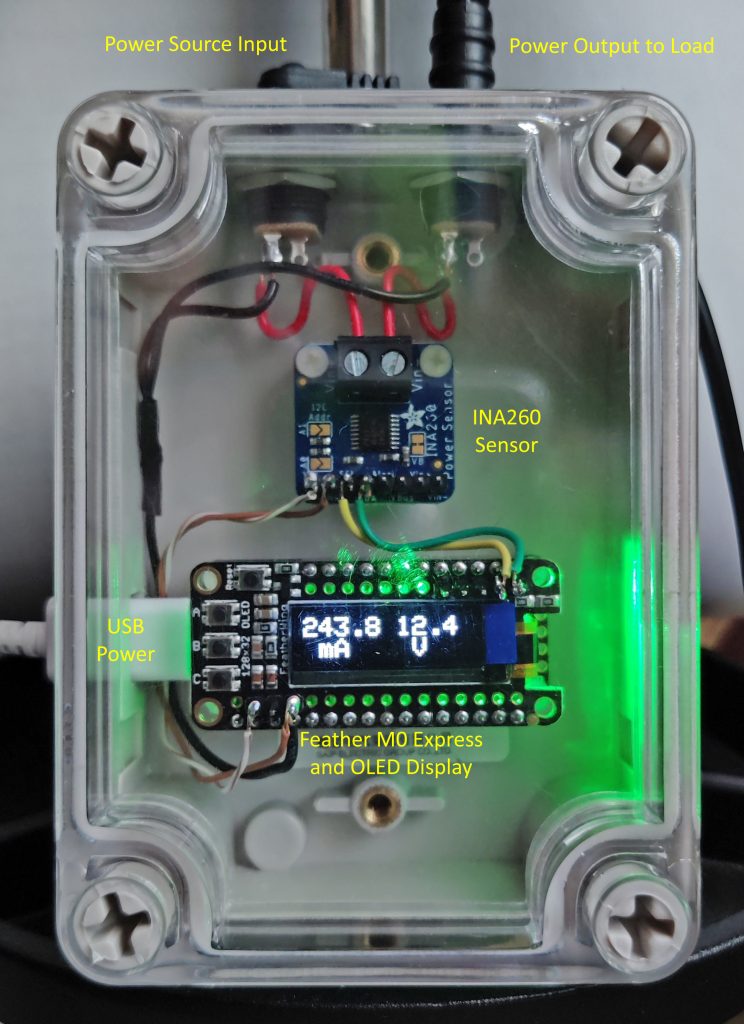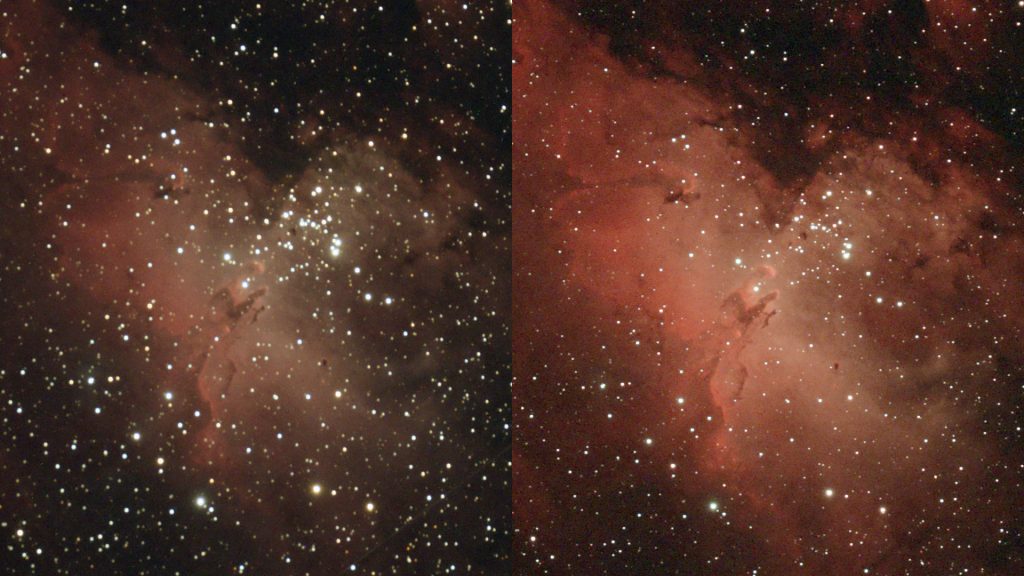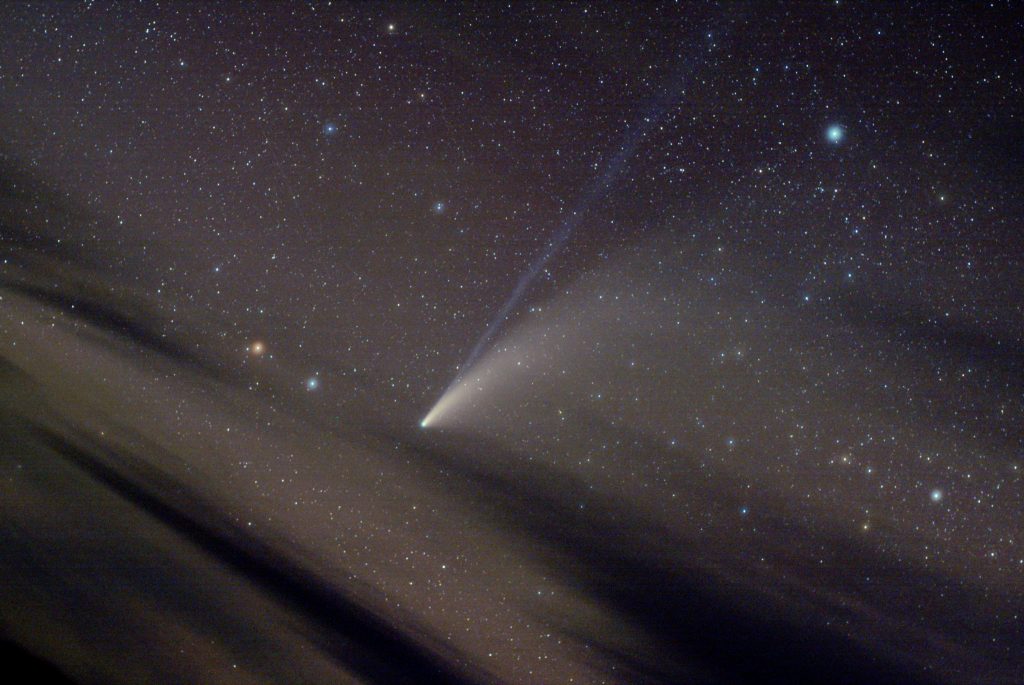
A week or so ago I saw that a series of visible International Space Station (ISS) passes were coming up for our area. While looking at the pass predictions I noticed that one of the ISS passes placed it almost in front of Mars at 9:00 pm local time on the 16th. A quick check with my astronomy program confirmed that the pass and Mars would be within the field-of-view (FOV) of the AT10RC telescope and ASI2600MC camera. Ok, I had to try to get a picture of that!
The AT10RC focal length (FL) is 2000mm and I normally add a 2x Powermate for planetary imaging. But I thought that 4000mm FL would reduce the FOV too much. But at 2000mm I didn't know how well the ISS would show up. So, not wanting to chance missing the ISS, I decided to use just the scope and camera for the set-up, no Powermate. I would use the planetary imaging capture program ASIcap to capture a video file during the time the ISS passes by Mars.
The predicted brightness of the ISS was somewhat higher than Mars. After centering the telescope's FOV on Mars, I adjusted the exposure time to 5ms to slightly underexpose Mars. With full frame (6248 x 4176) downloads the maximum frame rate for images this large was only about 2.5/second even with a USB3 connection to the camera. That meant that the system would be taking pictures at slightly less than a half-second apart. Hopefully that was going to be fast enough to catch the speeding ISS!
I started the video capture several seconds before the ISS reached Mars and continued a few seconds after it passed by. I thought I saw a blip on the screen and it turned out that two frames from the video had the ISS in them, one before passing Mars and one after passing. Somewhat surprisingly, the visibility of the main ISS features were not bad at all!
I combined the two video frames into this still image that shows Mars and the two ISS positions. This shows how much the ISS passed by Mars in less than a half second! I was pleased to find out that a 2000mm FL scope and the 3.76um sized pixels of the ASI2600MC are good enough to capture a recognizable image of the ISS.
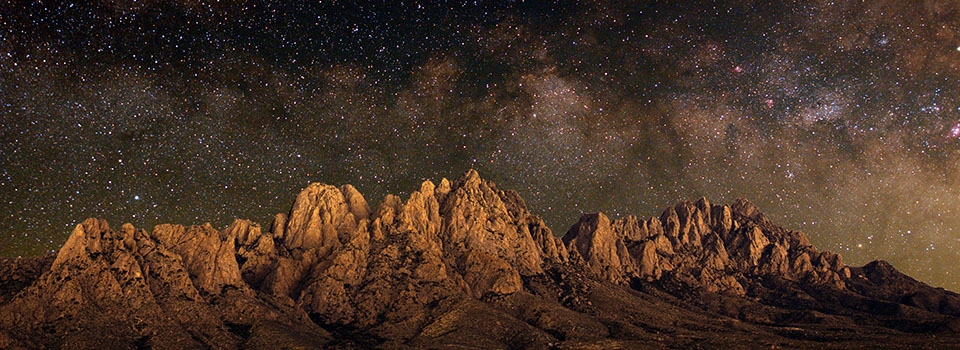
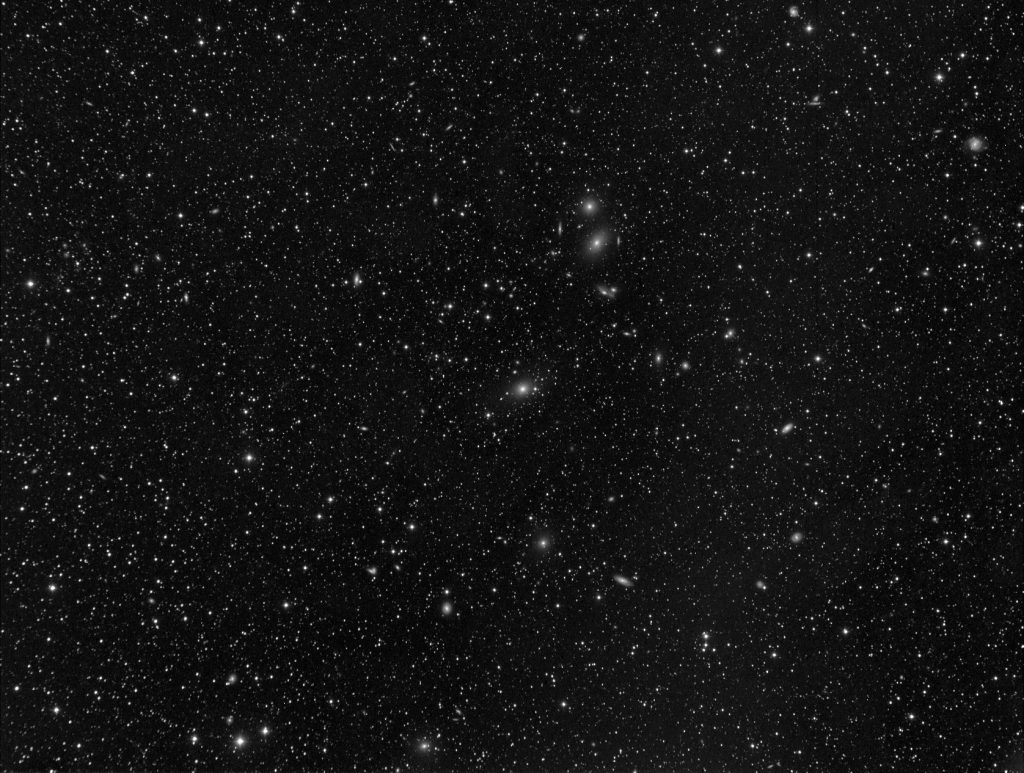
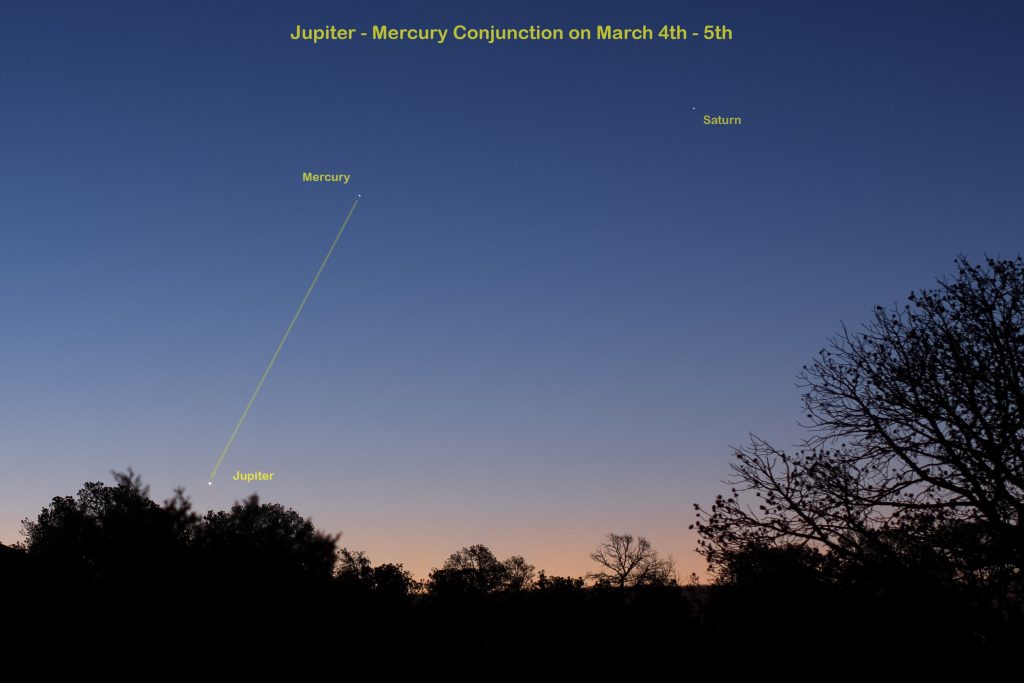


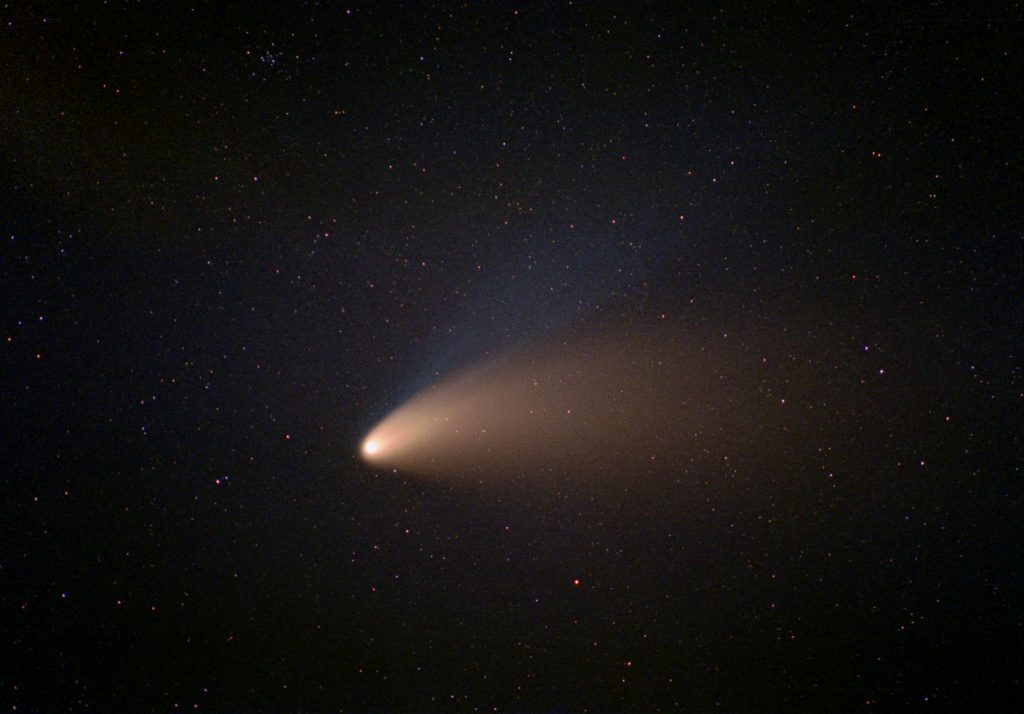 When I was looking through a box of old photos I came across an envelope with these in it. I wondered if scanning the negatives would yield a superior image compared to the original prints? On the night of April 4 1997, I had taken three photos at 60 second exposures. I scanned in those negatives and using today's techniques of stacking and stretching, the result was the image above. I'm happy to say that the newly processed image has much more detail in it than the original print. I think that the result is reasonably comparable to astronomy photos taken today. I'm glad I stuffed those photos in that box so many years ago!
When I was looking through a box of old photos I came across an envelope with these in it. I wondered if scanning the negatives would yield a superior image compared to the original prints? On the night of April 4 1997, I had taken three photos at 60 second exposures. I scanned in those negatives and using today's techniques of stacking and stretching, the result was the image above. I'm happy to say that the newly processed image has much more detail in it than the original print. I think that the result is reasonably comparable to astronomy photos taken today. I'm glad I stuffed those photos in that box so many years ago!